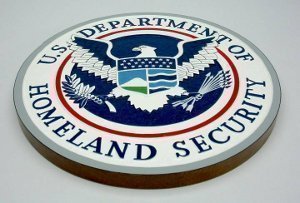What is HSPD-12?
Homeland Security Presidential Directive 12 (HSPD-12) is a presidential directive that President George W. Bush signed following the September 11, 2001 terrorist attacks. HSPD-12 required that all government agencies take measures to produce and distribute “smart cards” to their employees and contractors in order to properly identify those attempting to access federal buildings and computer networks. HSPD-12 was designed to reduce terrorist threats and improve federal security, although it has proven to be difficult to implement.
How HSPD-12 Works
HSPD-12 relies on smart cards to identify government employees and contractors. A smart card is a small, electronic card, much like a credit/debit card, that can store personal information about its card holder. Smart cards contain the holder’s fingerprints, name, address, clearance level, and other identifiable information that proves whether or not the user has permission to access a specific government asset. Rather than simply flashing a card in front of a security guard, a computer reads the smart card by matching this information to data stored on a server. Currently, over 16 million smart cards are in circulation. Government employees and contractors, civilian contractors, and active duty military personnel use them.
Applications
HSPD-12 smart cards were introduced as a precautionary security measure after the September 11, 2001 terrorist attacks. These attacks, while unexpected, could have been avoided if proper identification measures were taken. The fact that anyone could walk into a federal building after simply flashing a card at a security guard who does not run a check on the information often leads to weak points in the building or network’s security. HSPD-12 smart cards are quickly making this a thing of the past.
Advantages
HSPD-12 smart cards have several advantages over other identification systems. For example, personal identification is stored on the smart card rather than simply written on it. HSPD-12 smart cards cannot be duplicated or artificially manufactured because they must be read and compared to data stored on a federal server. HSPD-12 smart cards are also efficient and ergonomic as they only need to be held in front of a scanner in order to be read rather than being swiped through a card reader. This is because smart cards use wireless technology to transmit the data that they hold.
Disadvantages
HSPD-12’s biggest problem is the fact that it has been difficult to implement. Production and distribution deadlines have been missed due to technical problems with the smart cards themselves. The background checks involved in smart card distribution have also been held back due to the vast number of employees that must be evaluated. Another problem with HSPD-12 is that smart cards use wireless technology and are vulnerable to hackers who can steal the personal and confidential information held on them, compromising federal security. To avoid this problem, the government requires that all smart card holders keep their smart cards in a protective sleeve when they are not in use. The effectiveness of these protective sleeves has yet to be determined.


Comments - No Responses to “What is HSPD-12?”
Sorry but comments are closed at this time.